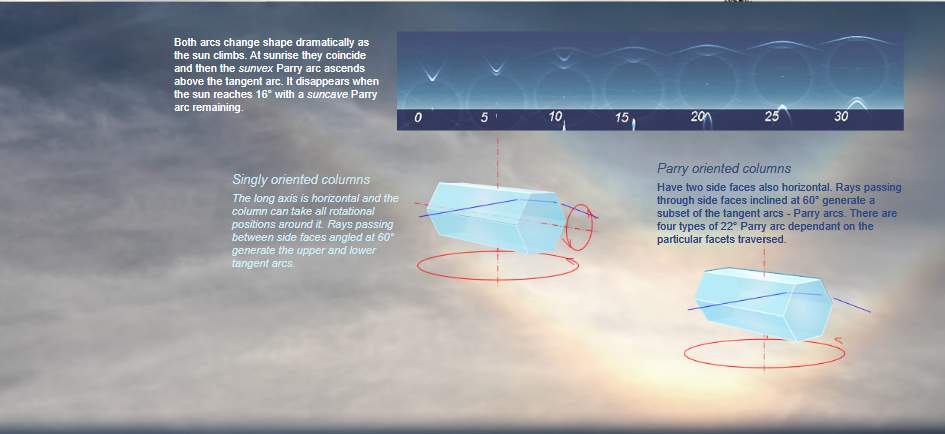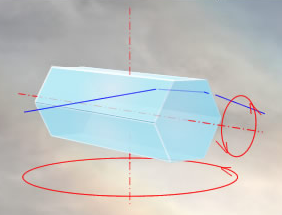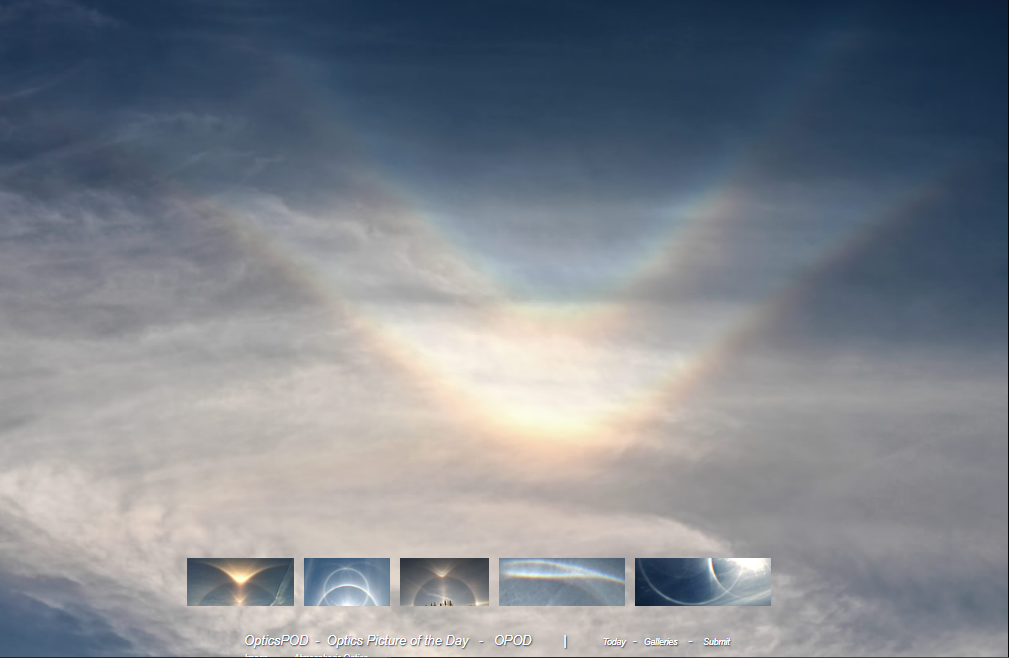Parry & Upper Tangent Arcs - OPOD
Parry & Upper Tangent Arcs: A Rare Atmospheric Optics Phenomenon
Atmospheric optics never fails to surprise us with its array of stunning and rare phenomena. One such captivating sight is the occurrence of Parry and Upper Tangent Arcs. These arcs, which can be observed above the sun, add a unique and enchanting touch to the sky.
Twin Halos: A Rare Display
Captured by photographer Ron Wayman in Dade City, Florida, the images reveal a remarkable sight. The lower "V" shaped arc, known as an upper tangent arc, is typically seen touching the top of a 22° halo. However, what makes this sighting truly extraordinary is the upper arc, which mirrors the lower one in shape. This upper sunvex Parry arc is a rarity and a sight to behold.
Changing Shapes with the Sun's Ascent
As the sun climbs in the sky, both the Parry and Upper Tangent Arcs undergo dramatic changes in shape. At sunrise, these arcs coincide and appear as a single entity. However, as the sun continues its ascent, the sunvex Parry arc gradually ascends above the tangent arc. Interestingly, when the sun reaches an angle of 16°, the sunvex Parry arc disappears, leaving behind only the suncave Parry arc.
Singly Oriented Columns: The Key Players
To understand the formation of these captivating arcs, we need to delve into the science behind them. Singly oriented columns play a crucial role in generating the upper and lower tangent arcs. These columns have a horizontal long axis and can rotate in any position around it. Rays passing between side faces angled at 60° create the mesmerizing tangent arcs that we observe.
Parry Oriented Columns: Adding Complexity
Parry oriented columns add another layer of complexity to this atmospheric phenomenon. These columns have two side faces that are also horizontal. Rays passing through side faces inclined at 60° generate a subset of the tangent arcs, known as Parry arcs. Interestingly, there are four distinct types of 22° Parry arcs, depending on the specific facets traversed.
Exploring the Wonder of Atmospheric Optics
The occurrence of Parry and Upper Tangent Arcs is just one example of the awe-inspiring beauty that atmospheric optics has to offer. From halos and rainbows to iridescent clouds and sun pillars, the sky never ceases to amaze us with its vivid displays. These optical phenomena are a result of the interaction between light and atmospheric particles, such as ice crystals or water droplets.
The Role of Ice Crystals and Sunlight
In the case of Parry and Upper Tangent Arcs, ice crystals in the atmosphere act as the key players. These tiny, hexagonal crystals interact with sunlight, causing it to refract and reflect in various ways. The intricate geometry of the ice crystals determines the specific shape and position of the arcs. As sunlight passes through these crystals, it undergoes multiple internal reflections and refractions, resulting in the mesmerizing display we observe in the sky.
Unveiling the Secrets of Nature
While we have made significant advancements in understanding atmospheric optics, there is still much to uncover. Scientists continue to study these phenomena, using advanced imaging techniques and computer simulations to unravel the intricacies of light interaction in the atmosphere. By gaining a deeper understanding of these natural wonders, we not only appreciate their beauty but also enhance our knowledge of atmospheric physics.
Capturing the Magic
Photographers and sky enthusiasts alike are drawn to the captivating beauty of Parry and Upper Tangent Arcs. With their cameras in hand, they aim to immortalize these fleeting moments of atmospheric splendor. The images captured by Ron Wayman serve as a testament to the sheer magnificence of these arcs and remind us of the wonders that lie just beyond our gaze.
A Reminder of Nature's Complexity
Parry and Upper Tangent Arcs serve as a reminder of the intricate and complex nature of our atmosphere. They ignite our curiosity and inspire us to explore the world around us. As we gaze at the sky, we are reminded that there is always more to discover and understand. The beauty of atmospheric optics lies not only in its visual spectacle but also in its ability to spark our imagination and deepen our appreciation for the wonders of nature.

Twin Halos, Florida
Ron Wayman imaged these arcs above the sun at Dade City. The lower "V" is an upper tangent arc more usually seen touching the top of a 22° halo. The upper arc echoing the lower one in shape is a rarity, an upper sunvex Parry arc.
All images ©Ron Wayman, shown with permission

Both arcs change shape dramatically as the sun climbs. At sunrise they coincide and then the sunvex Parry arc ascends above the tangent arc. It disappears when the sun reaches 16° with a suncave Parry arc remaining.

Singly oriented columns
The long axis is horizontal and the column can take all rotational positions around it. Rays passing between side faces angled at 60° generate the upper and lower tangent arcs.

Parry oriented columns
Have two side faces also horizontal. Rays passing through side faces inclined at 60° generate a subset of the tangent arcs - Parry arcs. There are four types of 22° Parry arc dependant on the particular facets traversed.


Note: this article has been automatically converted from the old site and may not appear as intended. You can find the original article here.
Reference Atmospheric Optics
If you use any of the definitions, information, or data presented on Atmospheric Optics, please copy the link or reference below to properly credit us as the reference source. Thank you!
-
<a href="https://atoptics.co.uk/blog/parry-upper-tangent-arcs-opod/">Parry & Upper Tangent Arcs - OPOD</a>
-
"Parry & Upper Tangent Arcs - OPOD". Atmospheric Optics. Accessed on November 24, 2024. https://atoptics.co.uk/blog/parry-upper-tangent-arcs-opod/.
-
"Parry & Upper Tangent Arcs - OPOD". Atmospheric Optics, https://atoptics.co.uk/blog/parry-upper-tangent-arcs-opod/. Accessed 24 November, 2024
-
Parry & Upper Tangent Arcs - OPOD. Atmospheric Optics. Retrieved from https://atoptics.co.uk/blog/parry-upper-tangent-arcs-opod/.